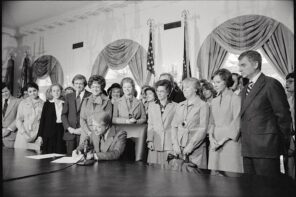In many ways, it was a moral voice. It was certainly an economic engine for New York City, employing countless actors. It was a money maker (until recently) for its home television network – and yes, it was fun. A guilty pleasure perhaps. Right on the cusp between utter junk and thought provoking.
I am not, of course, writing about the “law and order” that all the political candidates ever have favored. (Who, anyway, supports lawlessness and disorder, except those that remember that justice and law are not the same thing?) I have in mind, rather, this month’s end of the iconic television series, “Law and Order,” decades after its 1990 start, and many spinoffs later — with characters that have aged, actors that have come and gone, and reminders that too many cases end in moral ambiguity. And that the quotidian awfulnesses of everyday life are dealt with each and every day by lawyers and courts and police, and all of the victims and perpetrators. And that stories “ripped from the headlines” are a mirror in which we can see ourselves — or not. (Sometimes, of course, more literally than others, as when Fred Thompson, a post-2002 series mainstay who was previously Senator from Tennessee [1994 through 2003] ran for national office and many confused the gravitas of his character with his own personhood. Of course this same blurring of screen and (American) politics occurred as actors Reagan and Schwarzenegger ran for elected office.)
The series reminded us, too, that sometimes, what is awful is better than the existing options – and sometimes worse. That much of what we live with — and against — is moral ambiguity rather than certainty. That who “we” are is all too often up for grabs, contested, and nasty. That occasionally people act from principal and that the self-righteous are not always the righteous.
Yes, religion — in its many guises, both obvious and not, has been as much a character in the series as the city in which it was set (New York and its five boroughs). Whether the apparently secular “morality” behind which American religion too often hides, or the overt religiosity of preacher and rabbi, cult and church, Islam, Judaism, Santeria — 20th and then 21st century American and (occasionally global) religion appeared, disappeared and re-appeared across the decades of the television series.
A cameo here and there for Catholicism, for Judaism, for Islam, for Santeria and Evangelical Christianity. For the killers of George Tiller, transmogrified and fictionalized. For religions that permit refusal of transfusions for children as early as the 1991 episode “God Bless the Child”. For the themes of stem cell research, abortion, euthanasia, women’s rights, and terrorism rendered just distant enough to be entertaining — and provoking. Yes, Catholics, Jews, Muslims and others have worried about their portrayals on the series — and been pleased, on occasion, as well.




